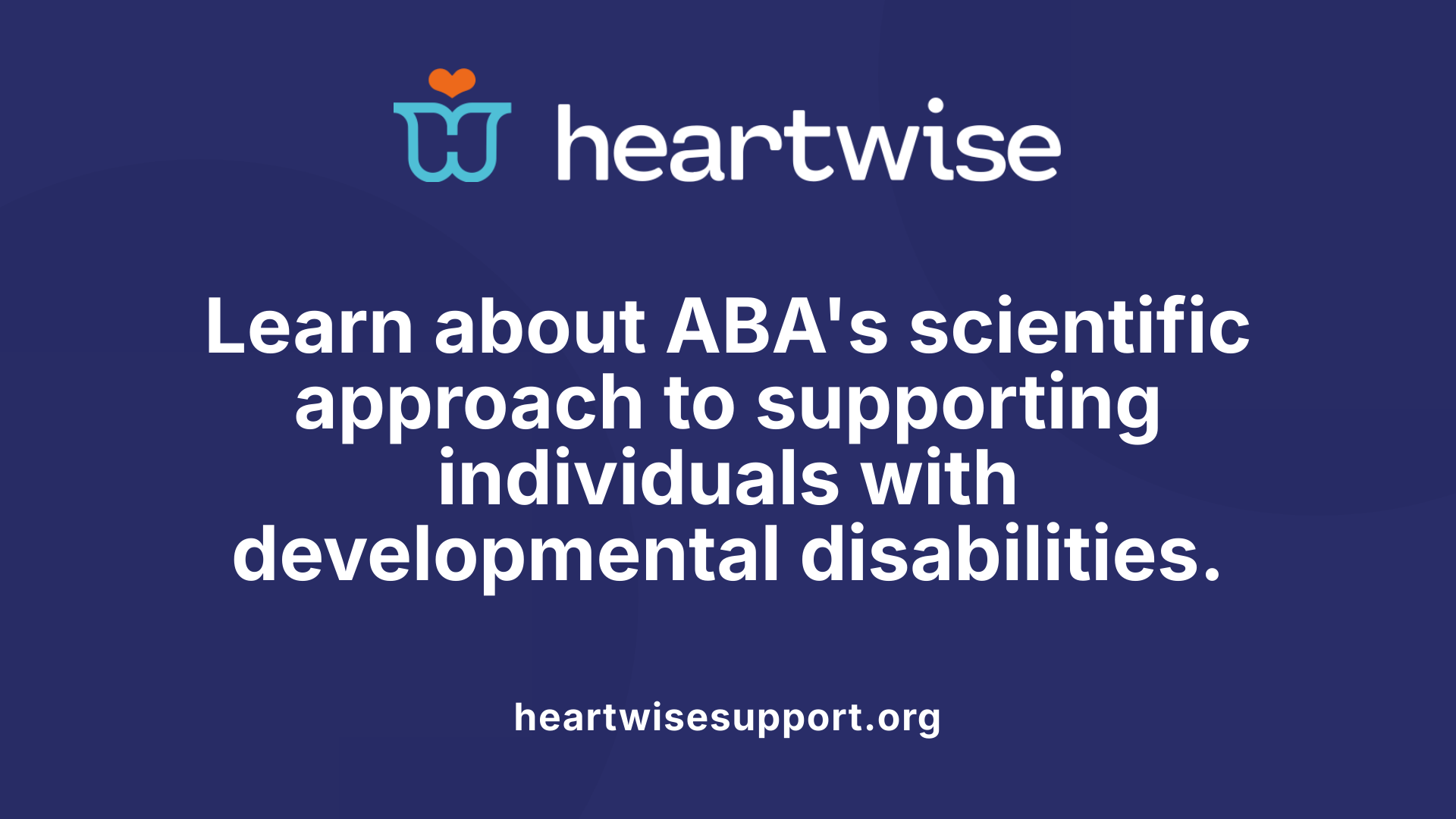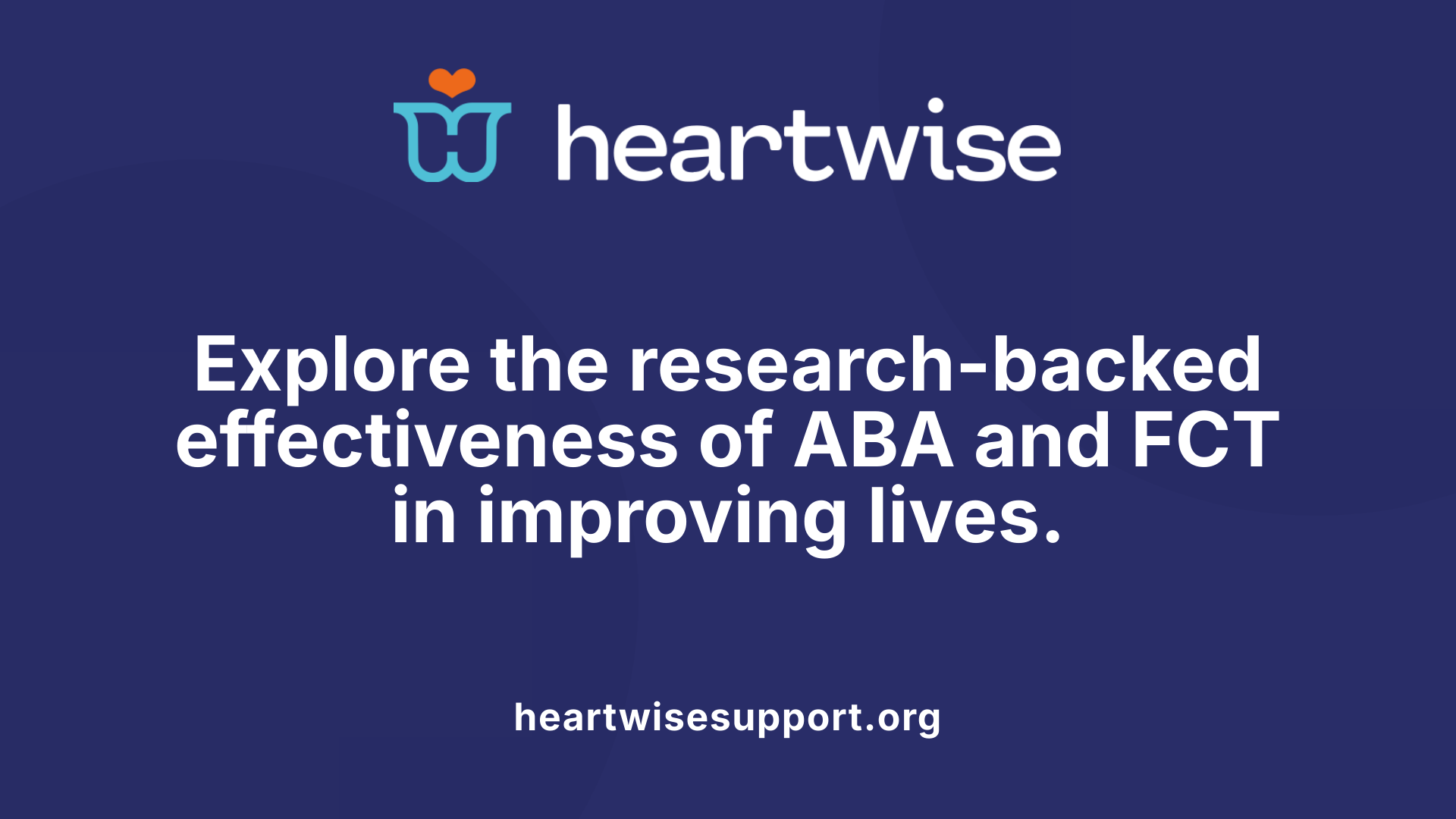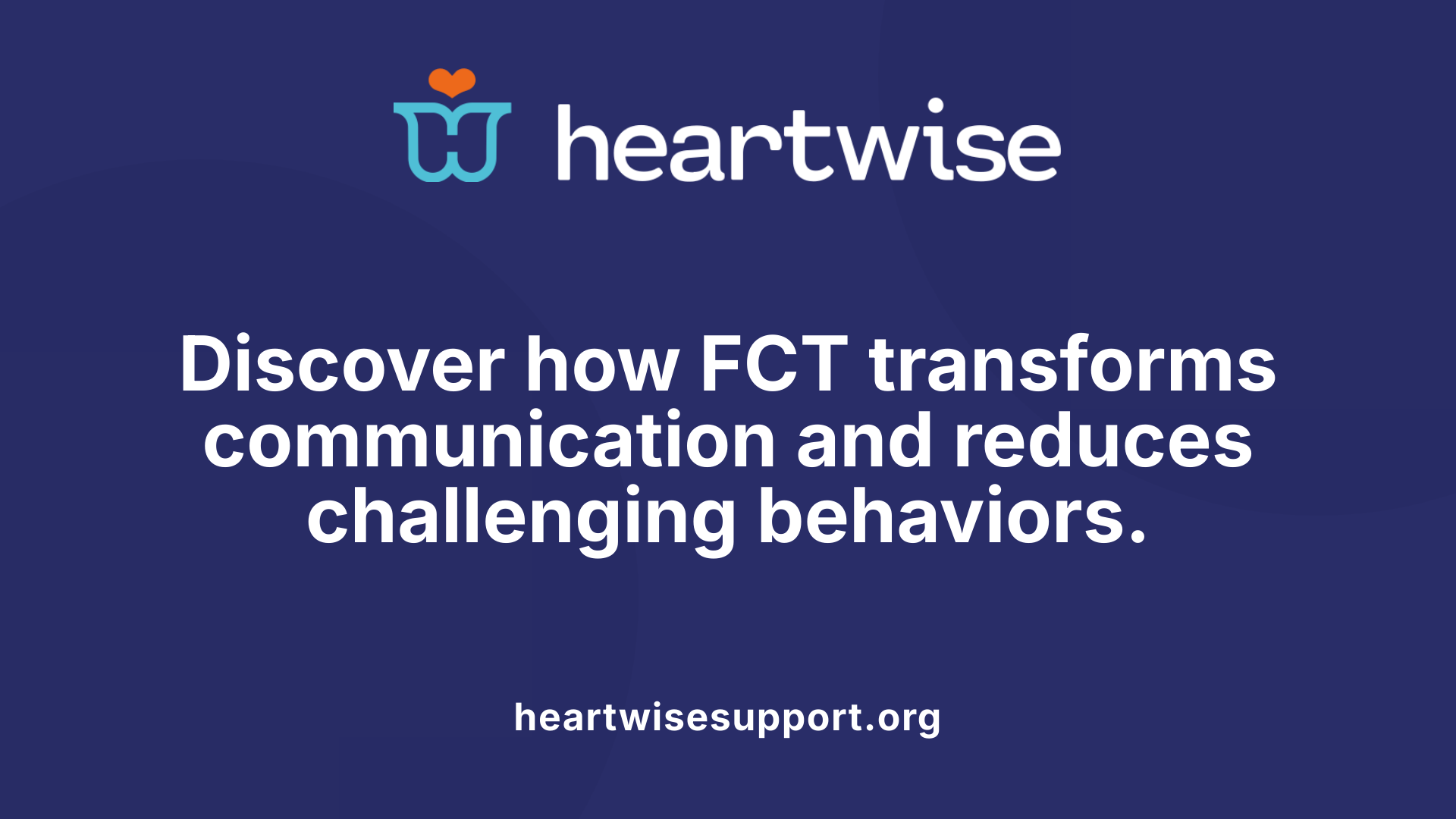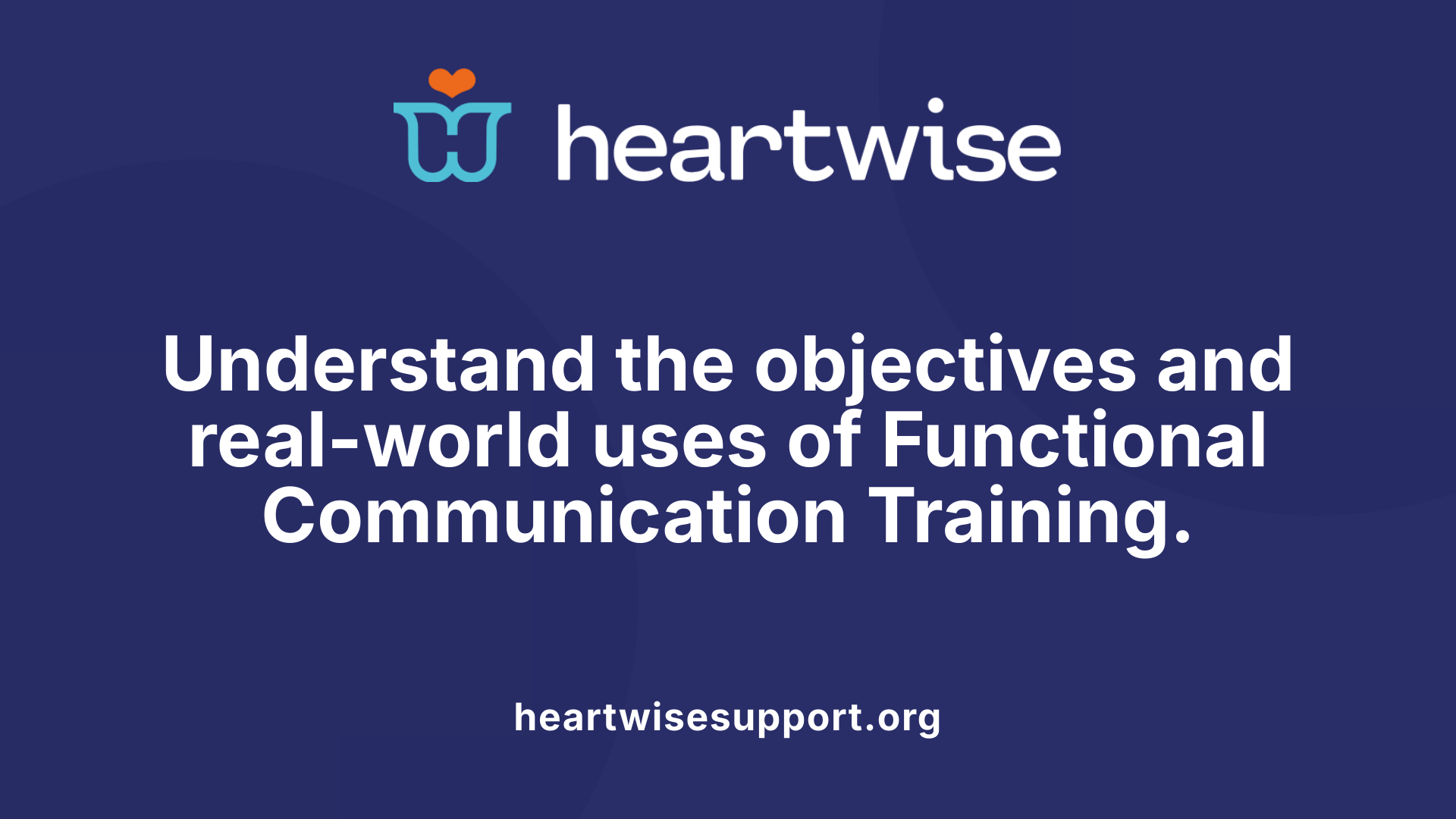Understanding ABA and FCT in Autism Therapy
Applied Behavior Analysis (ABA) and Functional Communication Training (FCT) are cornerstone interventions for individuals with autism spectrum disorder (ASD), aimed at improving social skills, communication, and reducing problematic behaviors. Rooted in scientific research, these approaches have proven effectiveness across various settings and age groups, supporting individuals to lead more independent and fulfilling lives.
What is Applied Behavior Analysis (ABA) Therapy?

What is applied behavior analysis (ABA) therapy?
Applied Behavior Analysis (ABA) therapy is a scientifically validated approach that focuses on understanding and changing behavior through the principles of behaviorism. It is widely used to support individuals with autism spectrum disorder (ASD) and other developmental disabilities. ABA involves analyzing how environmental factors influence behavior and then applying specific strategies to promote positive changes.
Goals of ABA
The primary aim of ABA is to increase desirable behaviors, such as communication, social skills, and daily living abilities. It also works to reduce challenging behaviors like aggression, self-injury, or tantrums. By addressing these behaviors, ABA helps individuals become more independent and engaged in their communities.
Methodologies used in ABA
ABA employs a variety of techniques tailored to each individual’s needs. Common methods include Discrete Trial Training (DTT), which breaks skills into small steps; Pivotal Response Treatment (PRT), which targets pivotal areas to promote broad development; and the Early Start Denver Model (ESDM), designed for young children. These approaches often incorporate positive reinforcement, prompting, modeling, and shaping to encourage skill acquisition.
Importance of early intervention
Research indicates that starting ABA therapy early, especially during the first few years of life, leads to better developmental outcomes. Early intervention can significantly improve communication, social engagement, and adaptive skills. It also tends to produce lasting benefits over the long term.
How ABA supports communication and behavior
ABA therapy is often integrated with other interventions like Functional Communication Training (FCT). FCT teaches children meaningful ways to communicate, replacing problematic behaviors with socially acceptable responses. This approach reduces frustration and enhances emotional well-being.
Family and environment involvement
Active involvement of families and caregivers is essential in ABA. Consistent application of strategies across all settings ensures better learning and generalization of skills. Treatment plans are personalized, and progress is regularly monitored to adjust interventions as needed.
| Aspect | Details | Additional Info |
|---|---|---|
| Main Focus | Enhance positive behaviors; reduce problematic behaviors | Tailored to individual needs |
| Techniques Used | Reinforcement, prompting, modeling, shaping | Based on behavior analysis principles |
| Settings | Homes, schools, community environments | Flexible and adaptable |
| Benefits | Increased independence, improved communication, social skills | Early intervention is most effective |
By combining scientific methods with personalized strategies, ABA continues to be a leading approach in supporting individuals with ASD, helping them lead more successful and fulfilling lives.
The Scientific Evidence Supporting ABA and FCT

What is the scientific evidence supporting ABA and FCT?
Research findings provide strong validation for the application of Applied Behavior Analysis (ABA), especially the component known as Functional Communication Training (FCT). Since its inception in 1985 by Carr and Durand, FCT has been extensively studied and shown to be effective in reducing challenging behaviors and improving communication skills in children with autism.
Numerous systematic reviews, meta-analyses, and experimental studies confirm that FCT can decrease problem behaviors, such as aggression or self-injury, by more than 90% in many cases. These behaviors are often replaced with socially acceptable communication methods like gestures, sign language, picture exchange systems, or speech devices, tailored to each individual.
The strength of this evidence lies in rigorous functional assessments that identify the purpose of problem behaviors—whether to gain attention, escape tasks, or obtain items—and guide the selection of appropriate communicative responses. Studies also demonstrate that when FCT is implemented consistently and systematically, its benefits extend across environments like home, school, and community settings.
Furthermore, research shows that FCT's positive effects are long-lasting. When combined with strategies like multiple trainers or naturalistic teaching approaches, improvements in behavior and communication tend to generalize and sustain over time.
Training parents and caregivers through telehealth or in-person sessions is also supported, making FCT accessible and adaptable for various family situations. Autism treatment task forces and professional organizations recognize FCT as a core, evidence-based approach within ABA, endorsing its use for enhancing the quality of life for individuals with autism.
In summary, the scientific and clinical literature robustly supports FCT as an empirically validated intervention, with a proven track record of reducing severe behaviors and fostering meaningful communication in ASD populations.
Understanding Functional Communication Training (FCT)

What is Functional Communication Training (FCT) in ABA?
Functional Communication Training (FCT) is an evidence-based approach integrated into Applied Behavior Analysis (ABA) to support individuals with autism in developing effective ways of expressing their needs and feelings. At its core, FCT involves identifying the reasons behind challenging behaviors—such as tantrums, aggression, or self-injury—by conducting thorough assessments. These behaviors often serve as communication outlets when a child cannot effectively express themselves.
Once the function of the disruptive behavior is understood—whether it's seeking attention, avoiding tasks, or requesting items—therapists teach alternative communication methods. These can include sign language, picture exchange systems (PECS), gestures, or verbal speech, depending on the child's abilities and preferences. Reinforced through positive feedback, these new skills offer a functional, socially acceptable way to communicate.
The primary goal of FCT is to replace problematic behaviors with purposeful communication strategies, which can lead to reduced frustration, better social engagement, and improved behavior overall. While implementing FCT can take several weeks or months, its success in enhancing communication and decreasing negative behaviors has been well documented.
Methods and Strategies for Implementing FCT

What methods and strategies are used to implement FCT?
Implementing Functional Communication Training (FCT) involves a systematic approach grounded in thorough assessment and personalized intervention. The first step in successful FCT is conducting a functional assessment, often through a functional analysis, to identify what reinforces the challenging behavior. Understanding the purpose of the behavior helps in selecting an appropriate, socially acceptable communication response.
Once the function of the behavior is identified, practitioners choose suitable response methods. These can include vocalizations, gestures, sign language, picture exchange systems like PECS, or speech-generating devices. The selected response should be easy to learn and socially recognized, ensuring the individual can effectively communicate their needs.
Teaching these responses involves a combination of prompting, shaping, and modeling. Prompting may start with full assistance and gradually fade over time, allowing the child to produce the response independently. Reinforcement is initially provided consistently to encourage use, then gradually thinned to promote long-term maintenance and natural use across different environments.
Additional strategies focus on response variability and generalization. Multiple trainers or settings are used to help the individual apply the new communication skills in various situations. Response fading, which involves reducing prompts and supports over time, is essential for fostering independence.
Environmental modifications, such as visual cues or preferred reinforcement items, support the learning process. Continual monitoring and adjusting reinforcement schedules, from continuous to intermittent, ensure the skill's durability. By implementing these methods conjointly, practitioners can effectively teach functional alternative responses that reduce problem behaviors and support communication development.
Goals and Practical Applications of FCT

What are the typical goals of Functional Communication Training?
The primary aim of FCT is to help children and individuals with communication challenges develop effective ways to express their needs, wants, and feelings. For those who are non-verbal or have limited verbal skills, FCT may involve gestures, sign language, picture exchanges, or using communication devices like speech-generating systems.
Beyond basic communication, FCT encourages learners to gain social skills such as taking turns, initiating interactions, and responding appropriately. These skills are crucial for engaging in social and everyday activities.
Another key goal is to facilitate the generalization of communication skills across different environments, such as home, school, and community. Ensuring skills are useful in real-world settings helps individuals participate more fully in daily life.
FCT also emphasizes promoting independence by teaching skills related to vocational tasks and leisure activities. This comprehensive approach supports long-term social participation and self-advocacy.
Ultimately, FCT aims to replace disruptive or challenging behaviors—such as aggression, self-harm, or escape—with meaningful communication responses. These responses are individualized, age-appropriate, and functional, helping reduce frustration and improve quality of life.
How are different communication modalities used in FCT?
FCT employs a variety of methods based on the individual's abilities and preferences. Typical modalities include:
| Modality | Description | Examples |
|---|---|---|
| Verbal communication | Teaching spoken words or phrases | "Can I have a cookie?" |
| Sign language | Using formal signs to communicate | Sign language gestures |
| Gestures | Simple physical cues for needs | Nodding, pointing |
| Picture Exchange Communication System (PECS) | Swapping pictures to request items | Giving a picture of food to request lunch |
| Augmentative and Alternative Communication (AAC) devices | Technology-assisted communication | Speech-generating devices |
Selection is individualized, considering the child's physical and cognitive abilities. The goal is to choose responses that are easy to recognize and quick to acquire, making communication as functional and natural as possible.
Application across different settings
FCT is versatile and can be implemented in multiple environments, including homes, schools, clinics, and community settings. Proper assessment and training help ensure consistency across these contexts.
In educational settings, teachers and therapists work together to incorporate FCT strategies into daily routines. At home, parents are supported to reinforce communication skills through modeling and prompting.
Multiple trainers or caregivers may be involved to promote skill generalization. Using similar stimuli and sequential training across settings enhances the likelihood that learned communication responses are maintained over time.
FCT can also be adapted for group settings, ensuring peer interactions support communication development.
Long-term impacts and benefits
When successfully implemented, FCT leads to many positive outcomes. These include a significant reduction in challenging behaviors, improved social engagement, and greater independence.
Individuals learn to communicate their needs effectively, which decreases frustration and anxiety. This not only fosters emotional well-being but also enhances social relationships.
Research indicates that FCT contributes to better academic participation and vocational opportunities, helping individuals with autism navigate various life domains.
Over time, individuals become more self-advocates, capable of expressing their preferences and making choices. This empowerment translates into higher quality of life and increased community involvement.
Overall, FCT supports lasting behavioral and communication improvements, making it an essential part of comprehensive autism intervention strategies.
The Impact of ABA and FCT in Autism Intervention
The integration of Applied Behavior Analysis and Functional Communication Training offers a proven, scientifically supported pathway to improving communication, reducing challenging behaviors, and fostering independence in individuals with autism. Through systematic assessments, individualized interventions, and reinforcement strategies, these approaches have transformed lives—empowering children and adults to navigate social environments with confidence. Continued research and practice refinement promise even greater outcomes, making ABA and FCT fundamental tools in the comprehensive treatment landscape for autism.
References
- What is Functional Communication Training?
- Functional Communication Training: A Review and Practical Guide
- Functional Communication Training (FCT) in ABA Therapy
- Functional Communication Training (FCT)
- Effectiveness of functional communication training with and without ...
- Functional Communication Training: Key Facts & Tips For Parents
- Functional Communication Training in ABA
- Benefits of Functional Communication in ABA Therapy
- What is Functional Communication Training in ABA?











